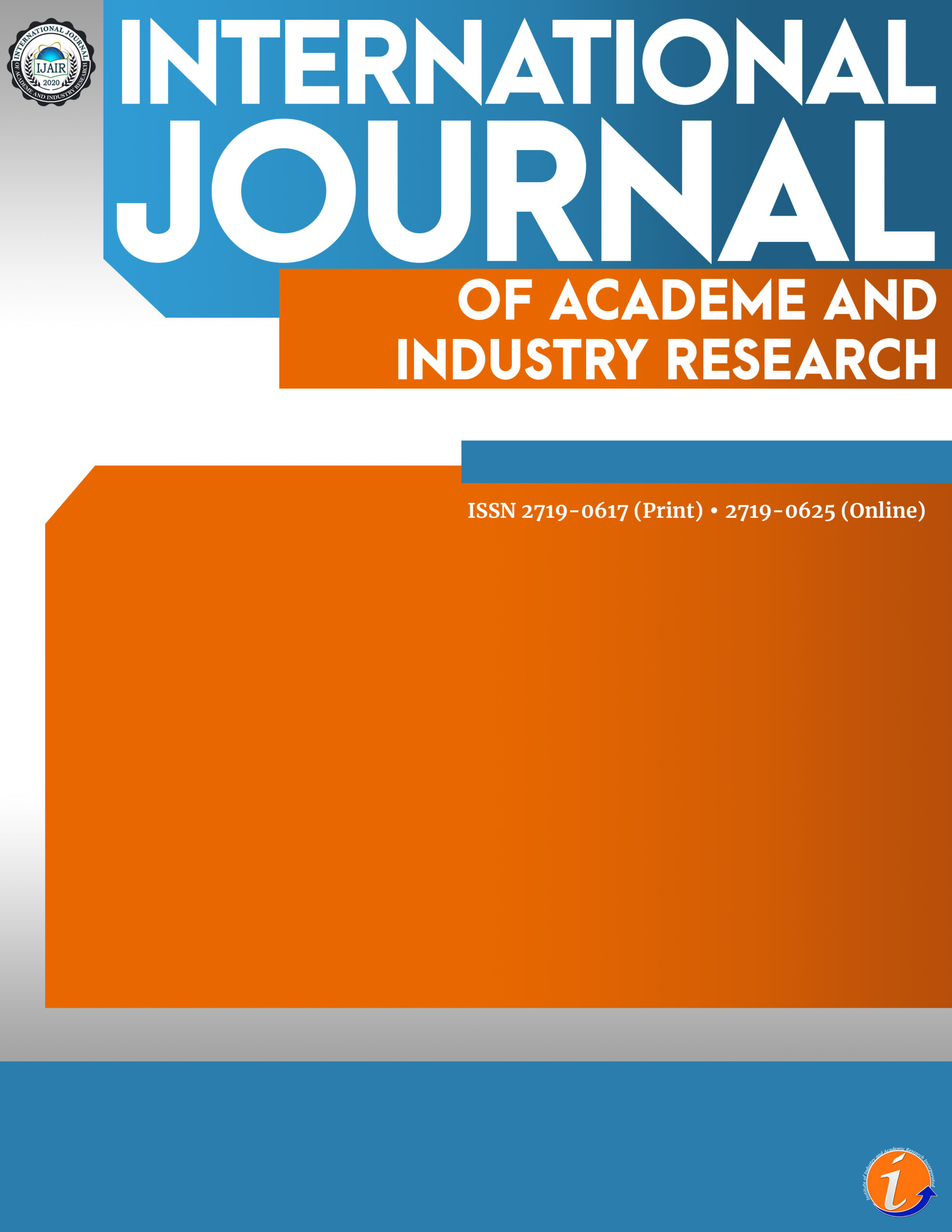This study evaluated the effectiveness of the reverse repurchase (RRP) rate as the main monetary policy instrument of the Bangko Sentral ng Pilipinas in affecting selected monetary policy indicators, particularly output gap, inflation, and nominal exchange rate, through a modified New Keynesian monetary policy model using vector autoregression (VAR). The results showed that changes in the RRP rate affects output gap, inflation, and nominal exchange rate, albeit not statistically significant. In addition, the “price puzzle” was seen in the results. This pertains to an increase in inflation after monetary policy contraction which is in contrast with the standard monetary policy theory.
interest rate, inflation rate, monetary policy, monetary economics
Martin Roy B. Base. Master of Arts in Economics, MEAL Officer, Save the Children Philippines
This paper is presented in the 3rd International Conference on Multidisciplinary Industry and Academic Research.
Agénor, P.-R., & Montiel, P. (2015). Development Macroeconomics (4th ed.). Princeton University Press.
Akram, Q., & Eitrheim, Ø. (2008). Flexible inflation targeting and financial stability: Is it enough to stabilize inflation and output? Journal of Banking & Finance, 32, 1242–1254.
Akyurek, C., Kutan, A. M., & Yilmazkuday, H. (2011). Can inflation targeting regimes be effective in developing countries? The Turkish experience. Journal of Asian Economics, 343-355.
Angeles, R., & Tan, M. (2007). The contribution of the output gap to the conduct of inflation targeting in the Philippines. The Philippine Review of Economics, 44(1), 99-123.
Bangko Sentral ng Pilipinas. (2008). 2008 Annual Report Volume I. Manila: Bangko Sentral ng Pilipinas.
Bangko Sentral ng Pilipinas. (2011). Annual Report. Manila: Bangko Sentral ng Pilipinas.
Bangko Sentral ng Pilipinas. (2014). Annual Report. Manila: Bangko Sentral ng Pilipinas.
Bangko Sentral ng Pilipinas. (2018). Annual Report. Manila: Bangko Sentral ng Pilipinas.
Bangko Sentral ng Pilipinas. (2018). Primer on Inflation Targeting. Retrieved from https://www.bsp.gov.ph/Media_and_Research/Primers%20Faqs/targeting.pdf
Bangko Sentral ng Pilipinas. (2018). Report on Philippine External Debt. Retrieved April 20, 2019, from Bangko Sentral ng Pilipinas Website: http://www.bsp.gov.ph/downloads/Publications/FAQs/targeting.pdf
Bernanke, B. S., & Gertler, M. (1995). Inside the Black Box: The Credit Channel of Monetary Policy Transmission. Journal of Economic Perspectiv, 27-48.
Bjørnland, H. C. (2008). Monetary Policy and Exchange Rate Interactions in a Small Open Economy. Scandinavian Journal of Economics, 110(1), 197-221.
Bjørnland, H. C. (2009). Monetary policy and exchange rate overshooting: Dornbusch was right after all. Journal of International Economics, 64-77.
Blanchard, O. (2017). Macroeconomics (7th Global ed.). Pearson.
Blanchard, O., & Galí, J. (2007). Real Wage Rigidities and the New Keynesian Model. Journal of Money, Credit and Banking, 39(1), 35-65.
Dornbusch, R. (1976). Expectations and Exchange Rate Dynamics. Journal of Political Economy, 1161-1176.
Emerenini, F. M., & Eke, C. N. (2014). The Impact of Monetary Policy Rate on Inflation in Nigeria. Journal of Economics and Sustainable Development.
Friedman, M. (1968). The Role of Monetary Policy. The American Economic Review, 58(1), 1-17.
Galí, J. (2018). The State of New Keynesian Economics: A Partial Assessment. Journal of Economic Perspectives, 32(3), 87-112.
Gochoco-Bautista, M. (2001, March). What Drives Monetary Policy? UP School of Economics Discussion Papers. Retrieved from UP School of Economics Discussion Papers: https://www.econ.upd.edu.ph/dp/index.php/dp/article/view/43/37
Goldsbrough, D., & Zaidi, I. (1989). Monetary Policy in the Philippines During Periods of Financial Crisis and Changes in Exchange Rate Regime: Targets, Instruments, and the Stability of Money Demand. IMF Working Paper.
Guinigundo, D. C. (2008). Transmission mechanism of monetary policy in the Philippines. In Transmission mechanisms for monetary policy in emerging market economies (pp. 413-425). Basel: Bank for International Settlements. Retrieved February 10, 2019, from https://www.bis.org/publ/bppdf/bispap35.pdf
Hall, R. E., & Mankiw, N. (1994). Nominal Income Targeting. In N. Mankiw (Ed.), Monetary Policy (pp. 71-74). The University of Chicago Press.
Hodrick, R. J., & Prescott, E. C. (1997). Postwar U.S. Business Cycles: An Empirical Investigation. Journal of Money, Credit and Banking, 1-16.
Kastrati, A., Toçi, V., & Adnett, N. (2018). The relationship between the output gap and excess liquidity: Evidence from Czech Republic, Estonia and Kosovo. Journal of Economics and Management, 95-118.
Kilian, L., & Lütkepohl, H. (2017). Structural Vector Autoregressive Analysis. Cambridge, United Kingdom: Cambridge University Press.
Kosa, N., Emirmahmutoglu, F., & Aksoy, S. (2012). The interest rate–inflation relationship under an inflation targeting regime: The case of Turkey. Journal of Asian Economics, 23(4), 476-485.
Mankiw, N. G. (2016). Macroeconomics (9th ed.). New York: Worth Publishers.
McCallum, B. T., & Nelson, E. (1999). Nominal income targeting in an open-economy optimizing model. Journal of Monetary Economics, 43(3), 553-578.
Medalla, F. M., & Fermo, L. B. (2013). A Univariate Time Series Analysis of Philippine Inflation During the Inflation Targeting Period. In Bangko Sentral Review 2013. Bangko Sentral ng Pilipinas.
Mishra, P., Montiel, P. J., & Spilimbergo, A. (2012). Monetary Transmission in Low-Income Countries: Effectiveness and Policy Implications. IMF Economic Review, 270-302.
Philippine Statistics Authority. (2012). National Accounts, Q4 and Annual 2012. Quezon City: Philippine Statistics Authority.
Philippine Statistics Authority. (2018). Inventory of Statistical Standards in the Philippines. Retrieved from Philippine Statistics Authority: https://psa.gov.ph/ISSiP/concepts-and-definitions/161406
Rafiq, M., & Mallick, S. (2008). The effect of monetary policy on output in EMU3 A sign restriction approach. Journal of Macroeconomics, 30 , 1756–1791.
Raghavan, M., Silvapulle, P., & Athanasopoulos, G. (2011). Structural VAR models for Malaysian monetary policy analysis during the pre- and post-1997 Asian crisis periods. Applied Economics, 44, 3841–3856.
Şahin, Ö. U. (2014). The Effect Of Inflation Targeting Regime On Government Current (Consumption) Expenditures And Output Gap In Turkey. Journal of Life Economics .
Sek, S. (2009). Interactions between Monetary Policy and Exchange Rate in Inflation Targeting Emerging Countries: The Case of Three East Asian Countries . Journal of Economics and Finance.
Sheedy, K. D. (2014). Debt and Incomplete Financial Markets: A Case for Nominal GDP Targeting. Brookings Papers on Economic Activity, 2014(1), 301-373.
Sims, C. A. (1980). Macroeconomics and Reality. Econometrica, 1-48.
Sims, C. A. (1986). Are forecasting models usable for policy analysis? Federal Reserve Bank of Minneapolis.
Stock, J. H., & Watson, M. W. (2001). Vector Autoregressions. Journal of Economic Perspectives, 101-115.
Stock, J. H., & Watson, M. W. (2015). Introduction to Econometrics (Updated 3rd Global ed.). Pearson.
Sumner, S. B. (2012). The case for nominal GDP targeting. Mercatus Research.
Tan, E. A. (1972). Conduct of Philippine Monetary Policy and the Quantitative Control of Credit. Philippine Review of Economics, 47-67.
Taylor, J. B. (1993). Discretion versus Policy Rules in Practice. Carnegie-Rochester Conference Series on Public Policy(39), 195-214.
Taylor, J. B. (1995). The Monetary Transmission Mechanism: An Empirical Framework. Journal of Economic Perspective, 11-26.
Taylor, J. B., & Williams, J. C. (2011). Simple and Robust Rules for Monetary Policy. In B. M. Friedman, & M. Woodford (Eds.), Handbook of Monetary Economics (Vol. 3B, pp. 829-859). Elsevier.
Walsh, C. E. (2017). Monetary Theory and Policy (4th ed.). Cambridge, MA: The MIT Press.
Williamson, S. D. (2018). Macroeconomics (6th Global ed.). Pearson.
Wooldridge, J. M. (2016). Introductory Econometrics (6th ed.). Boston, MA: Cengage Learning.
Cite this article:
Base, M.B. (2022). Reverse repurchase rate on selected monetary policy indicators: A vector autoregression. International Journal of Academe and Industry Research, 3(4), 83-106. https://doi.org/10.53378/352936
License:
![]()
This work is licensed under a Creative Commons Attribution (CC BY 4.0) International License.










